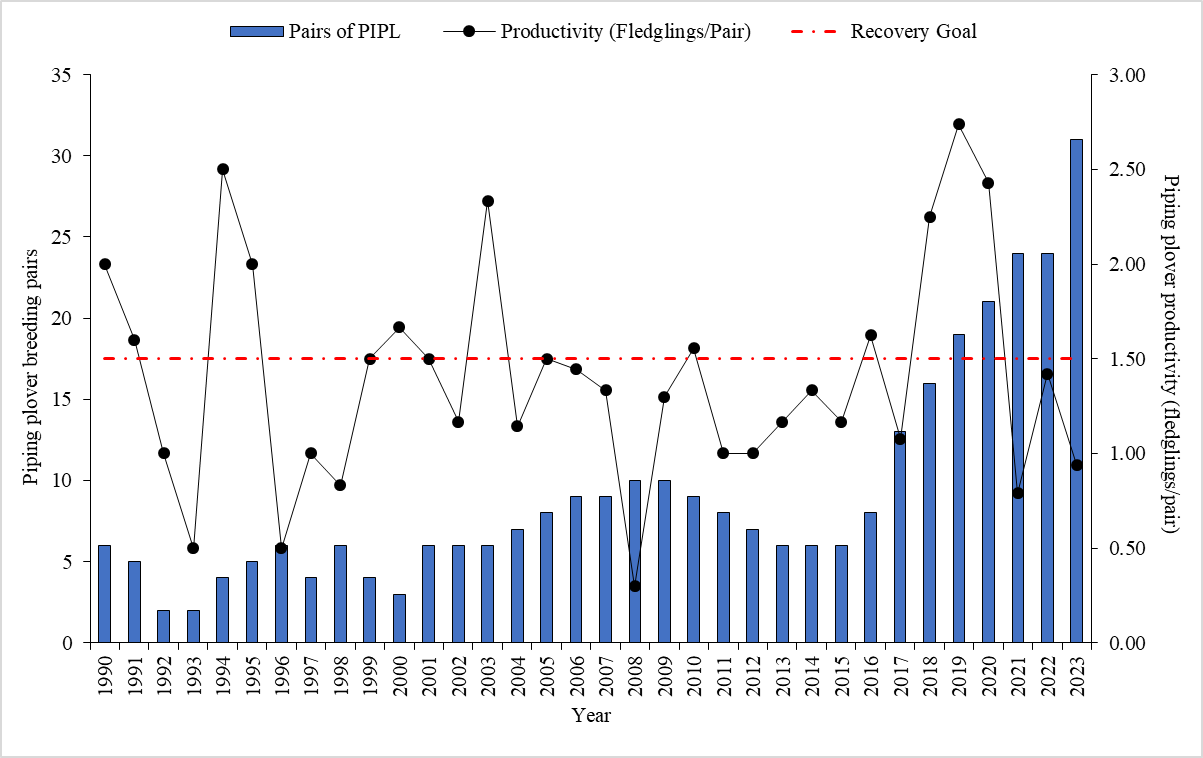Dwindling populations have landed the Piping Plovers on the federal Endangered Species List. DNREC’s Beach-Nesting Bird Program monitors these beach-nesting birds, provides habitat protection and educates the beach-going public.

Piping plovers are small sand-colored shorebirds that nest and feed on the beach. They begin arriving and nesting on Delaware’s beaches in March. They generally migrate south by September.
Historically, most Piping Plovers have nested in Delaware at Cape Henlopen State Park.
Since 2016, Piping Plovers have also been nesting at Fowler’s Beach, in Prime Hook National Wildlife Refuge, where the number of breeding pairs have increased annually.
Since Piping Plovers were added to the federal Endangered Species List as “threatened,” protections of nesting areas have been instituted and the Atlantic Coast population has doubled.
As piping plovers begin arriving in Delaware, the DNREC Division of Fish and Wildlife monitors their activities, along with other beach-nesting species. Areas that have been identified as suitable nesting habitat are closed to provide disturbance-free zones where the plovers can nest.
The Piping Plover Program depends on volunteers to help inform the public about the breeding progress of the plovers and the importance of staying out of closed areas. You can register to become a Piping Plover Volunteer.

The Beach-Nesting Bird Project also color-bands piping plovers to help identify individual birds. The unique color bands help biologists learn more about the plovers’ behavior and breeding activity. Biologists are studying plover movement and site fidelity within Delaware and dispersal outside the state.
Site fidelity is another way of saying site loyalty. Would a plover return to the same site every year to breed? Would it return to the same site it hatched from to breed?
Using unique color bands allows biologists to determine how loyal plovers are to a specific site.
The project would also like to determine the piping plover chicks’ home range size, habitat use and selection — and the carrying capacity of piping plovers.
Understanding these factors will help the state know which and how much habitat to prioritize for plovers, and how this habitat can be better protected.
DNREC biologists continue to monitor the breeding plovers until the last chicks of the season have left for migration.

The state has tracked nesting pairs of Piping Plovers since 1989 and recorded the number of fledglings produced each year.
The average number of fledglings produced, per nesting pair, is a measure of productivity.
Delaware’s goal is to reach a productivity rate of 1.5 fledglings per pair and maintain that rate for five consecutive years.
During the most recent field season, Delaware reached a high of 31 breeding pairs.
The productivity rate had decreased from the previous year to 0.91 fledglings per pair for the entire state.
Cape Henlopen fledged 9 chicks and Fowler Beach fledged 20 chicks.
The program was also able to uniquely color-band 87 piping plover adults and chicks.
Related Topics: beach nesters, conservation, fish and wildlife, piping plover, seabirds, volunteer, wildlife